Yes, soya chaap is an excellent plant-based protein source, offering about 12–15 grams of protein per 100 grams. Made from soybeans and wheat gluten, it supports muscle growth, boosts energy, and serves as a healthy vegetarian alternative to meat when prepared in a grilled or roasted form.
Is Soya Chaap A Good Source Of Protein?
Yes, soya chaap can be a Good Source Of Protein, especially for vegetarians and vegans. Soya chaap is made from soybean flour or soy protein isolate, which is rich in plant-based protein. It’s a versatile food product that can be used in various dishes, and it can provide a substantial amount of protein in your diet.
Soy protein is considered a high-quality protein because it contains all the essential amino acids needed by the human body. It’s also relatively low in saturated fat compared to some animal-based protein sources. Soya Chaap can be a valuable addition to a vegetarian or vegan diet to meet protein needs.
Keep in mind that the nutritional content of Soya Chaap Protein can vary depending on how it’s prepared and the specific brand or recipe you use. It’s always a good idea to check the nutrition label for accurate information on protein content and other nutrients. Additionally, incorporating a variety of protein sources into your diet can help ensure you get a well-rounded intake of essential amino acids and other nutrients.
Soya chaap is not only a good source of protein but also considered a Soya Chaap Healthy addition to your diet. It is rich in plant-based proteins, which can be beneficial for heart health as they are typically low in saturated fat. Additionally, soya chaap contains essential nutrients like iron, calcium, and fiber, making it a nutritious choice. However, it’s essential to prepare and consume it in a balanced manner, as part of a varied diet, to reap its full health benefits.
How much protein is in 1 plate of chaap?
Soya chaap is not only a popular non-meat protein source but also a good option for vegetarians. It is composed of soybeans and textured vegetable protein (TVP). The dish’s protein content depends on the method of preparation and serving size. A regular serving of plain soya chaap (about 200 grams) gives around 25-30 grams of protein which is why it is considered an excellent meat alternative for both vegetarians and vegans.
If chaap is marinated or served with gravy (like malai chaap or tandoori chaap), then a slight decrease in protein value may occur because of the adding of cream, curd, or other things that reduce the mixing of soy with the dish. Nonetheless, still 18-25 grams of protein can be consumed per plate in such situations.
Soya chaap helps not only with protein but also with other vital nutrients like amino acids, iron, and fiber. It also helps in building muscle, weight loss support, and satiating for longer. For fitness lovers, it is a healthy dish when soya chaap is combined with salad or multigrain roti.
On the other hand, chaap in the form of deep-frying or excessive cream cooking may not be good and they could lead to consuming calories and fat unnecessarily. Thus grilled or roasted chaap is the most suitable option if you intend to take in protein and its health benefits completely.
Also Check:- Vegan Friendly Countries
Which Good Source Of Protein is the best to lose weight?
The best way to lose weight is by consuming lean and high-quality proteins which not only build muscle but also control cravings and prolong satiety. The best options consist of chicken breast, eggs, fish (salmon or tuna), tofu, lentils, Greek yogurt, cottage cheese, and soy-based products like Soya Chaap Protein. From plant-based sources, soy protein and pea protein are the most effective for weight management. They are low in fats and high in amino acids which help in fat loss due to their support for metabolism and muscle repair. Combining protein-rich food with regular workouts and a balanced diet speeds up fat loss while retaining lean body mass.
Is soya chaap healthy for men?
Yes, soya chaap is good source of protein for males. It is a source of plant protein that is not only rich but also helps in gaining muscles, making them strong and recovering them after workouts. The consumption of soya chaap also provides body with amino acids, fiber, iron, and calcium. All these prove to be very important for good health and energy. One of the biggest misconceptions is that soy intake has any effect on testosterone levels in men. On the contrary, it is only the unwholesome processed or fried chaap that would lead to higher intake of sodium and fats respectively. The best option turns out to be grilled or roasted soya chaap offering high protein but fewer calories — perfect for fitness and balanced nutrition.
Is soya chaap actually healthy?
Soya chaap is healthy but the factor of how it’s made and consumed plays a major role. The primary ingredient—soy protein—is extremely nutritious as it provides all nine essential amino acids which make it a complete plant-based protein. A 100-gram serving of plain soya chaap gives around 12–15 grams of protein along with fiber, iron, and calcium which are all muscle growth and energy support nutrients.
Nevertheless, it is packaged with reduced healthiness when chaap is deep-fried or heavily coated in cream, butter, or cheese, as these add up to the total fat and calories. Grilling, roasting, or tandoori soya chaap is the healthiest choice that keeps the protein advantages without the excess oil.
In small amounts, soya chaap is not only a good alternative to meat but also caters to weight management, heart health, and vegetarian diets.
Who invented soya chaap?
The originator of soya chaap is not well-known at all; however, the taste and source of soya chaap was believed to be around North India, especially Delhi and Punjab in the late 1900s. It was intended as a non-meat replacement for the meat kebabs and tikkas and served to the great vegetarian population in these areas.
Cooks and food experts worked with soybean cubes and a mixture of soy flour and wheat gluten cut into shapes to imitate the traditional meat chaap (mutton or chicken). Later on, it was named “soya chaap” and served in various ways like malai chaap, tandoori chaap, and afghani chaap, etc.
Today it has become not only the most sought-after snacks on the streets but also a curry dish in restaurants all over India reflecting the marriage of traditional Indian cooking and modern plant-based style cooking.
Is Soya Chaap Protein good for skin?
Yes, Soya Chaap Protein is beneficial for the skin as it is packed with protein, antioxidants, and isoflavones that contribute to enhancing skin texture and elasticity. The isoflavones of soy are similar to estrogen and therefore they can lessen the appearance of fine lines, wrinkles, and dryness, particularly in the case of mature skin. Another thing is that soy has vitamin E and fatty acids that keep the skin nourished in addition to protecting it from the sun and pollution. There can be a noticeable difference in the skin where brighter, smoother, and even-toned skin is the result of regular soy intake or the application of soy-based products. Having soy foods like tofu, soy milk, or soya chaap as part of your daily nourishment means you are contributing to healthy and glowing skin in a natural way.
What is soya chaap called in English?
Soya chaap has no exact English name, but it may be referred to as “soy meat sticks” or “soy protein skewers.” It is produced from soybean chunks and dough (a blend of soy protein and wheat gluten) that is formed around sticks to look like meat chaap or kebabs. To put it differently, it is a plant-based meat alternative that has been created to imitate the texture and flavor of chicken or mutton. Soya chaap is a dish in Indian vegetarian cuisine, especially in the form of tandoori chaap, malai chaap, and curry chaap. Common usage has it being called “vegetarian soy kebab” in English.
Which is better, soya chaap or chicken?
The choice between soya chaap or chicken depends on the dietary goals and preferences of the person:
Protein Content:
- Chicken has a slight edge over soya chaap in terms of protein per 100g (about 25g) while soya chaap contains 12–15g for plain chaap).
- Both provide complete proteins with essential amino acids.
Fat and Calories:
- Skinless chicken is very low in fat, on the other hand deep-fried or creamy chaap can be high in calories and fat.
- Grilled soya chaap is considered as the low saturated fat and cholesterol-free option.
Other Benefits:
- Soya chaap being plant-based is rich in fiber and contains isoflavones that might support heart health.
- Chicken on the other hand is a source of vitamins B6 and B12 and minerals such as zinc and iron.
Verdict:
- For those who adhere to a vegetarian diet or are heart-conscious, soya chaap is the better choice.
- For non-vegetarians focused on muscle-building, lean chicken may be preferable.
If you want I can create a quick comparison table of soya chaap versus chicken for easier understanding.
Is soya a Good Source Of Protein quality protein source?
Yes, soy is a top-notch protein supplier as it has all the nine essential amino acids that the body is unable to synthesize. Apart from being one of the few perfect plant-based proteins, it is also suitable for vegetarians and vegans. Soy protein plays a role in building muscles, boosting metabolism, and protecting the heart as it is low in saturated fat and has no cholesterol at all. Tofu, soy milk, soya chaap, and edamame are some common soy products that supply protein and at the same time, fiber. Research indicates that moderate soy intake is safe and even advantageous for men and women alike, thus replacing animal-based proteins with soy is a healthy option.

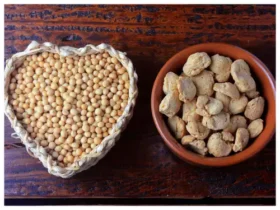



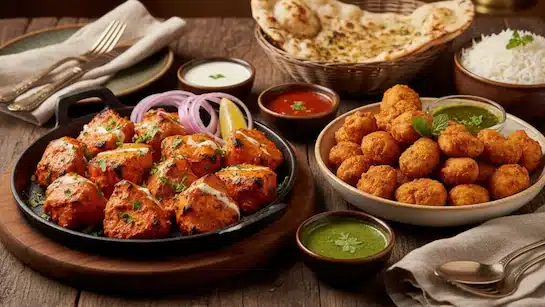




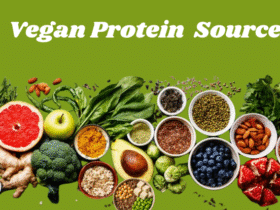
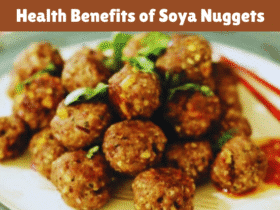


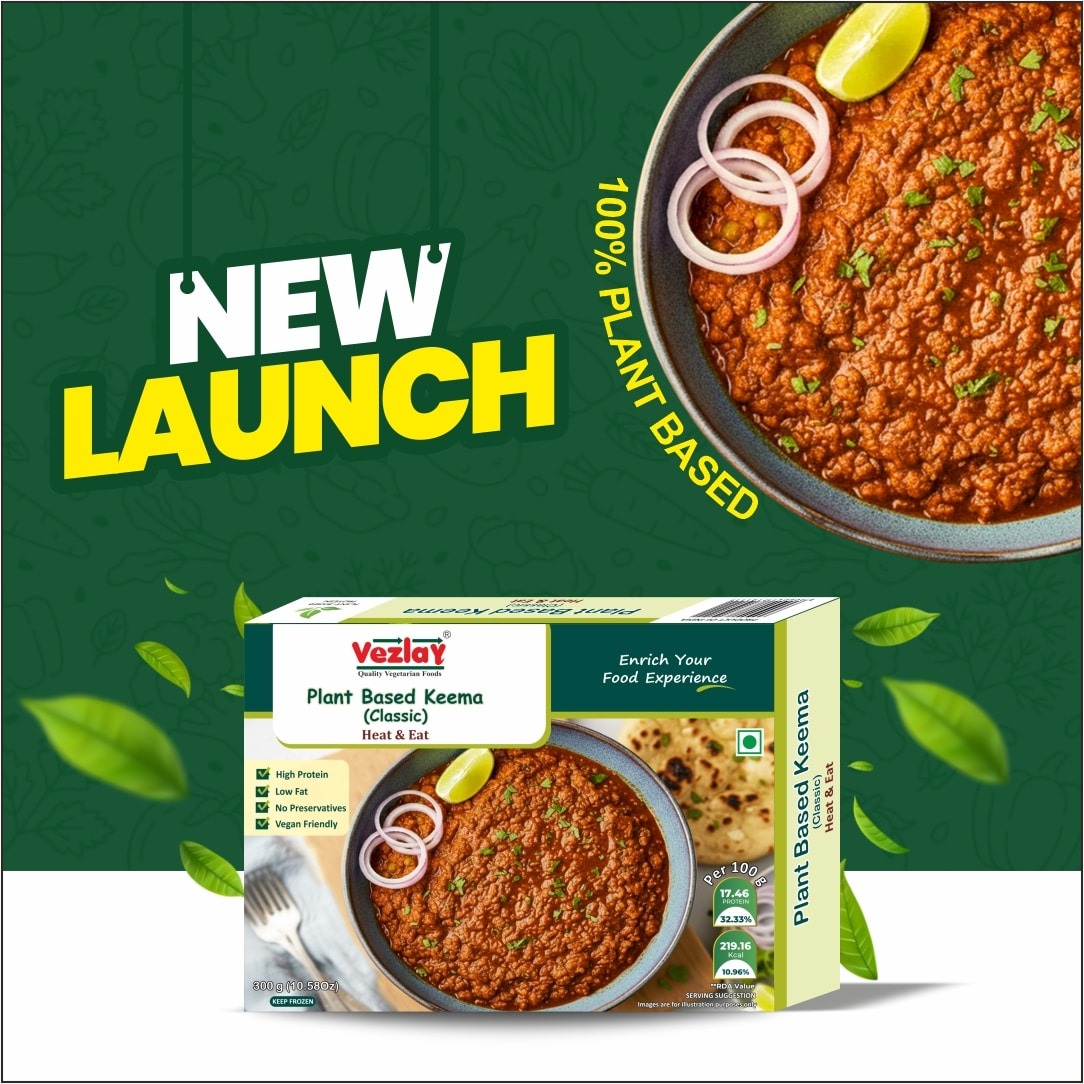
Leave a Reply